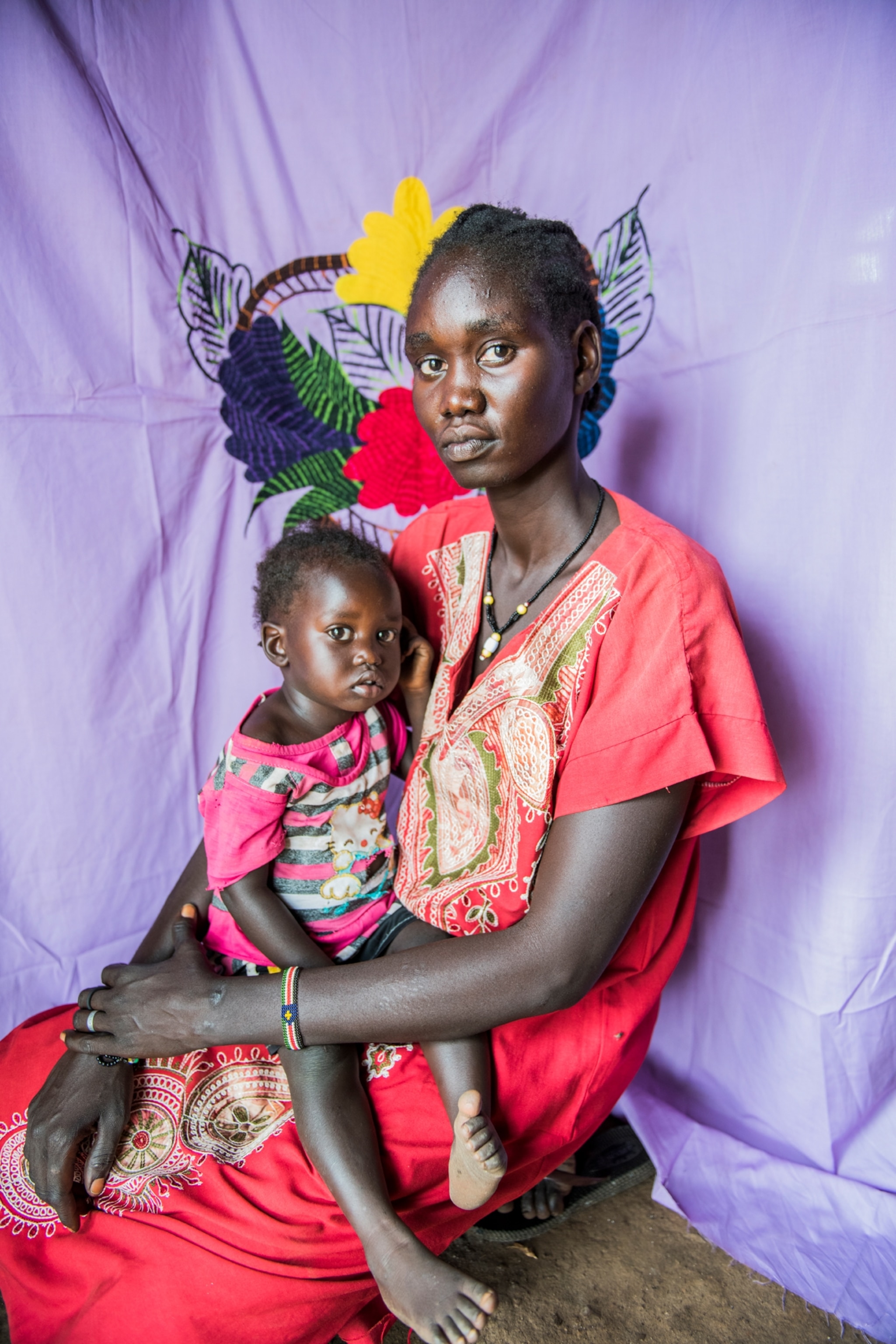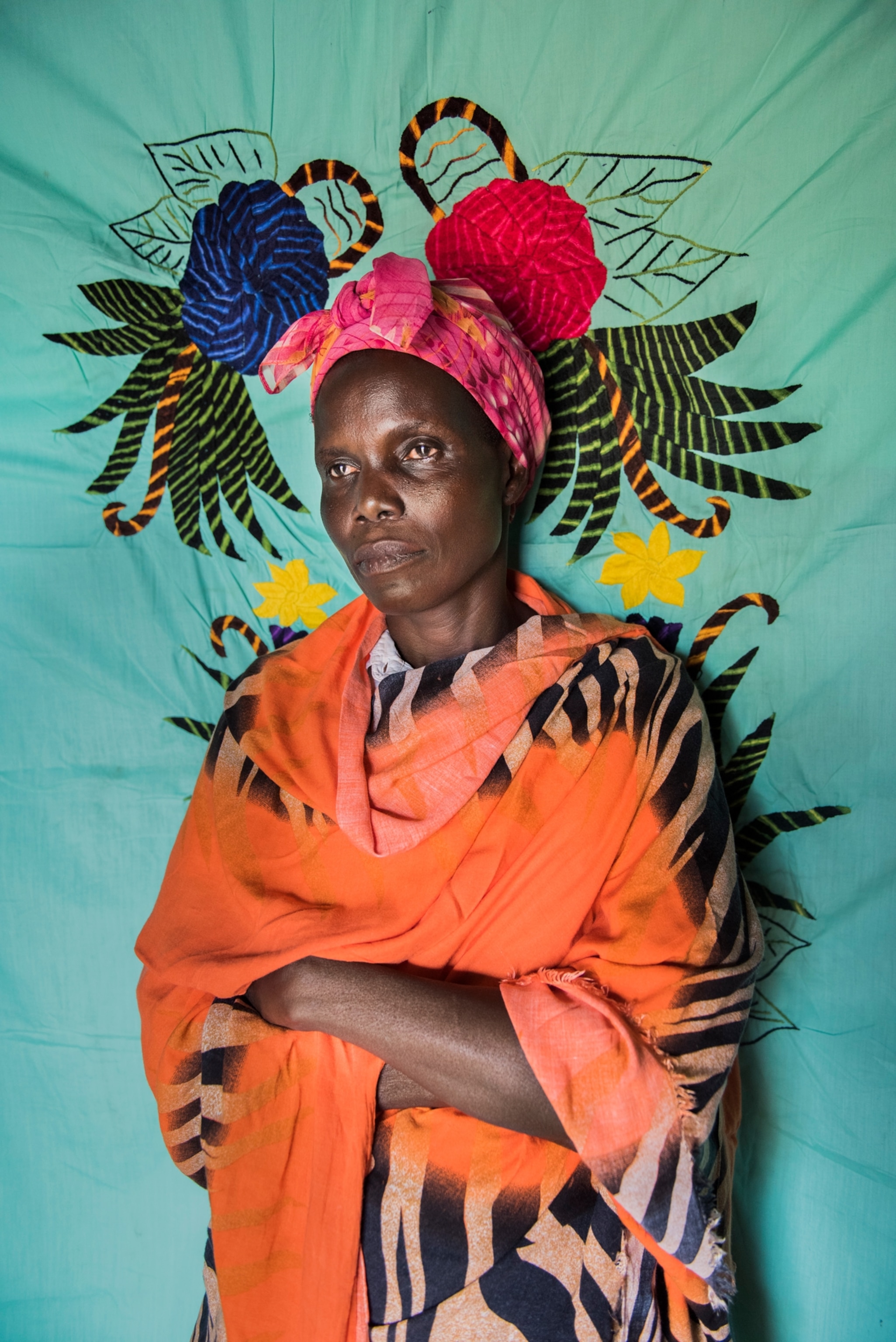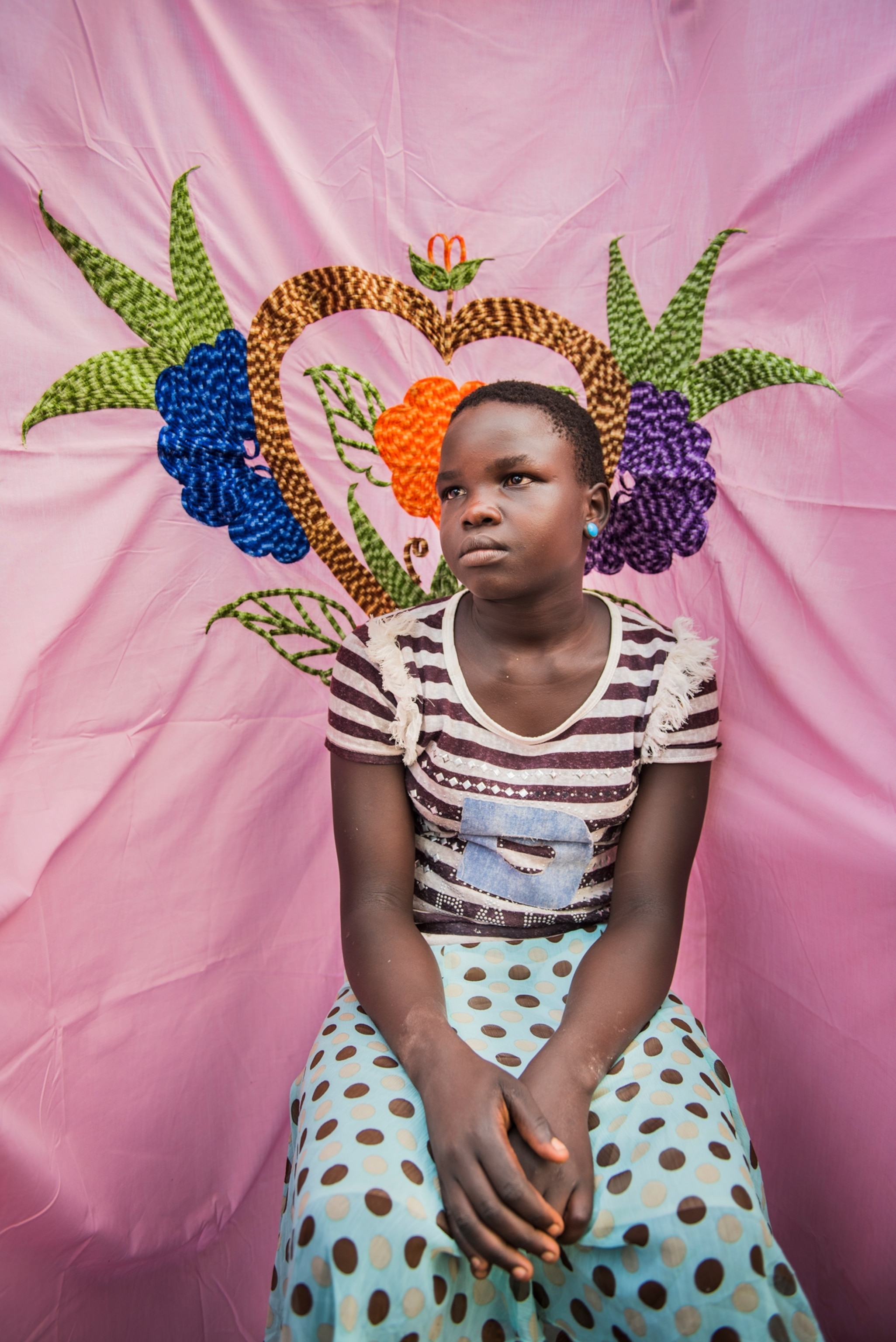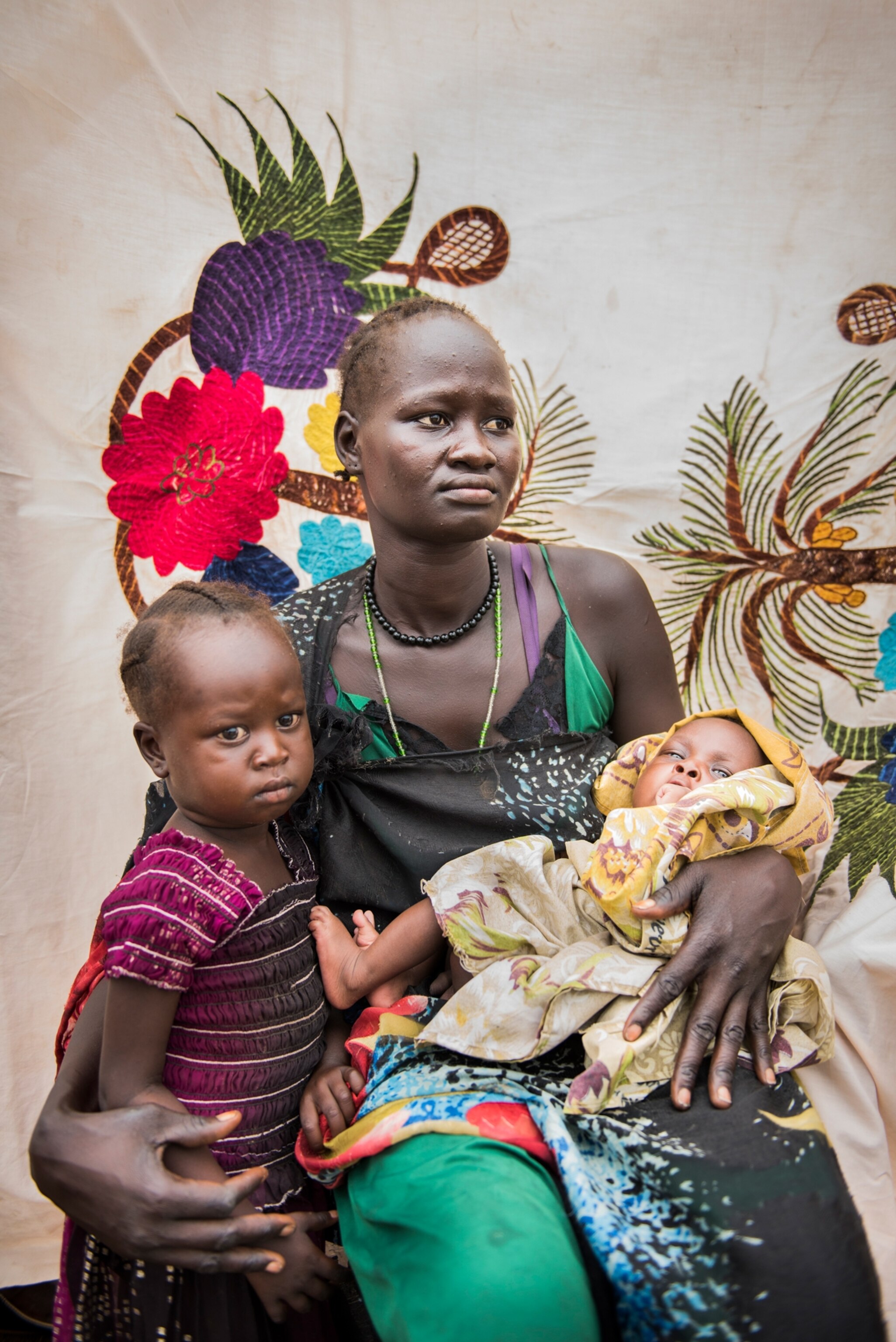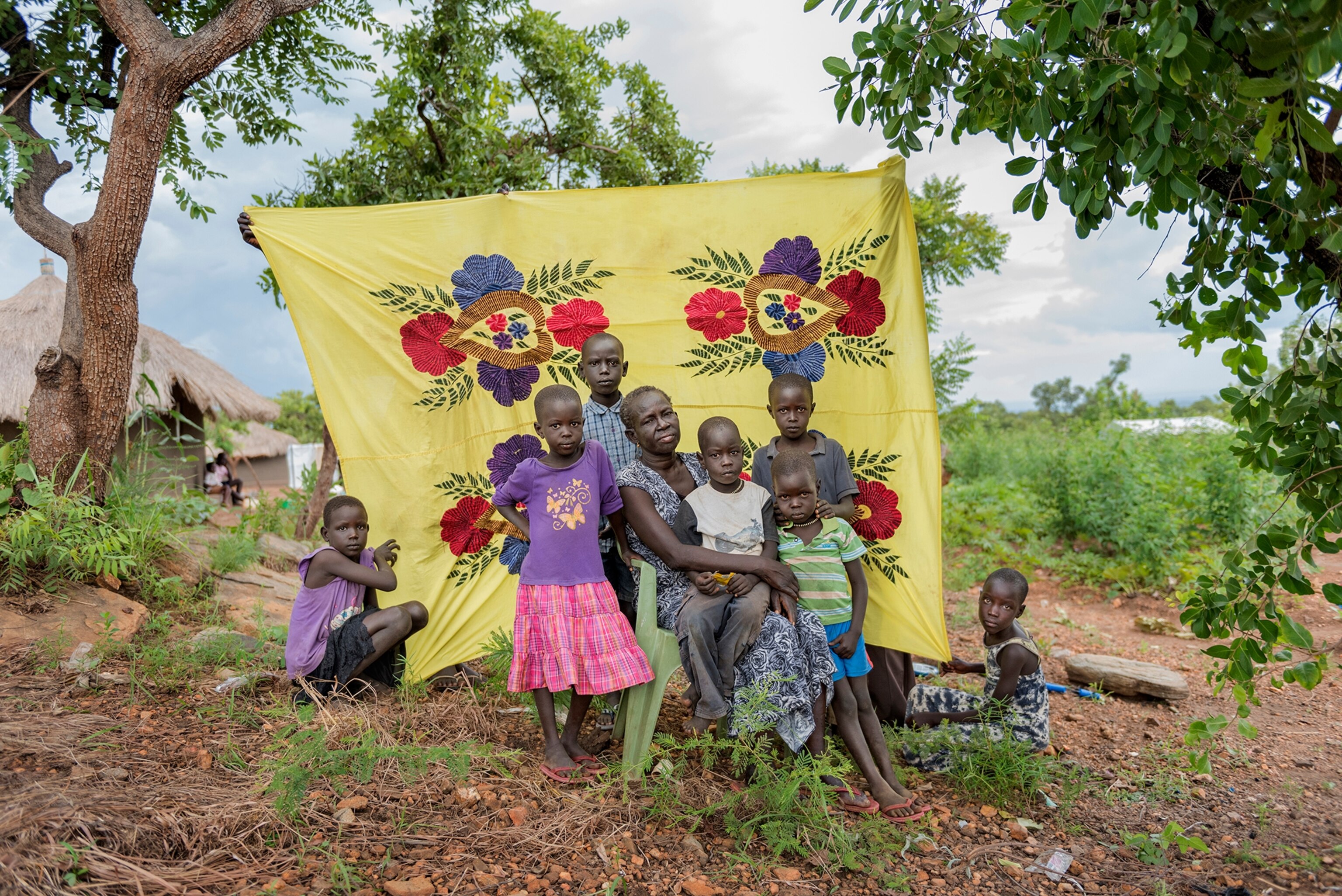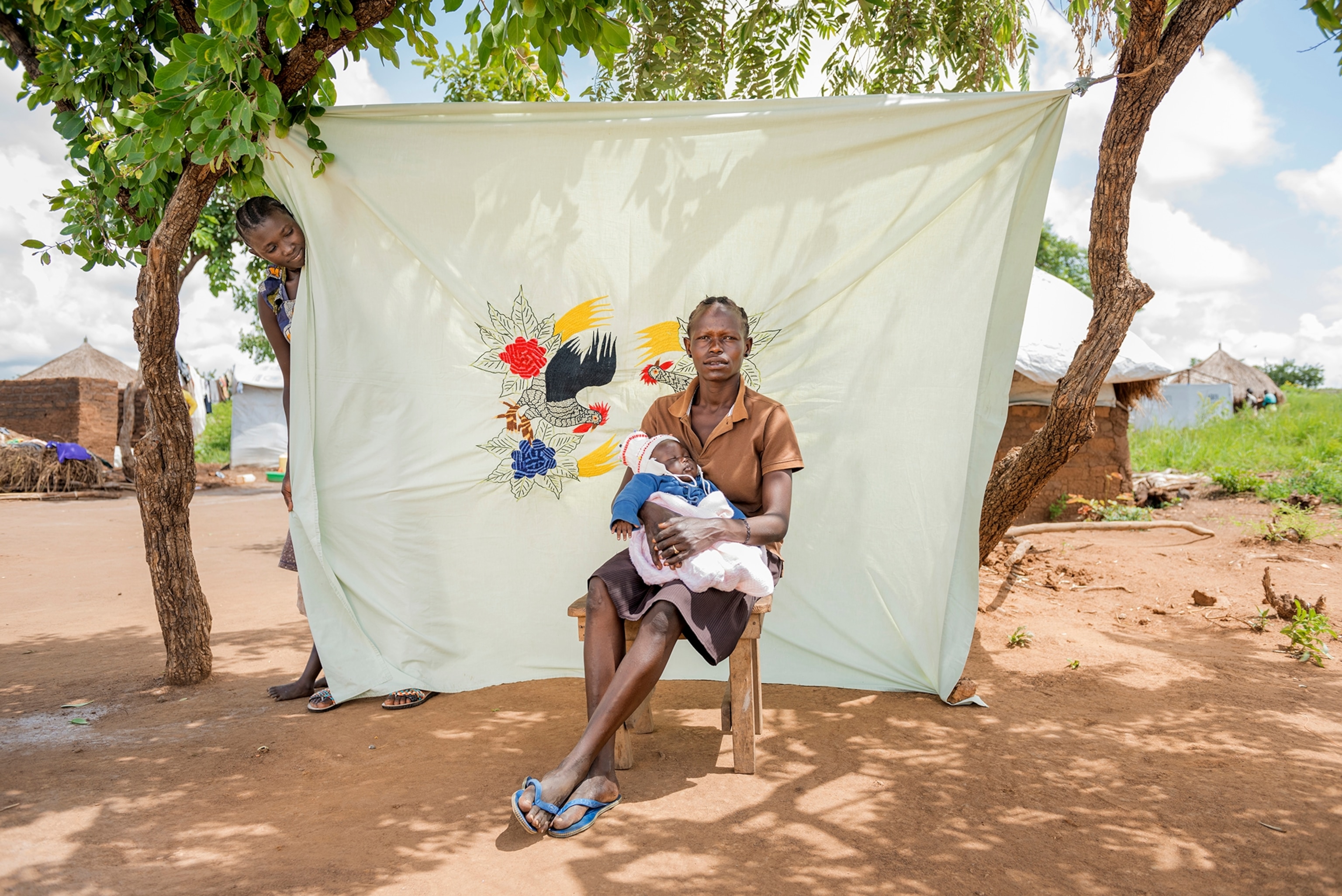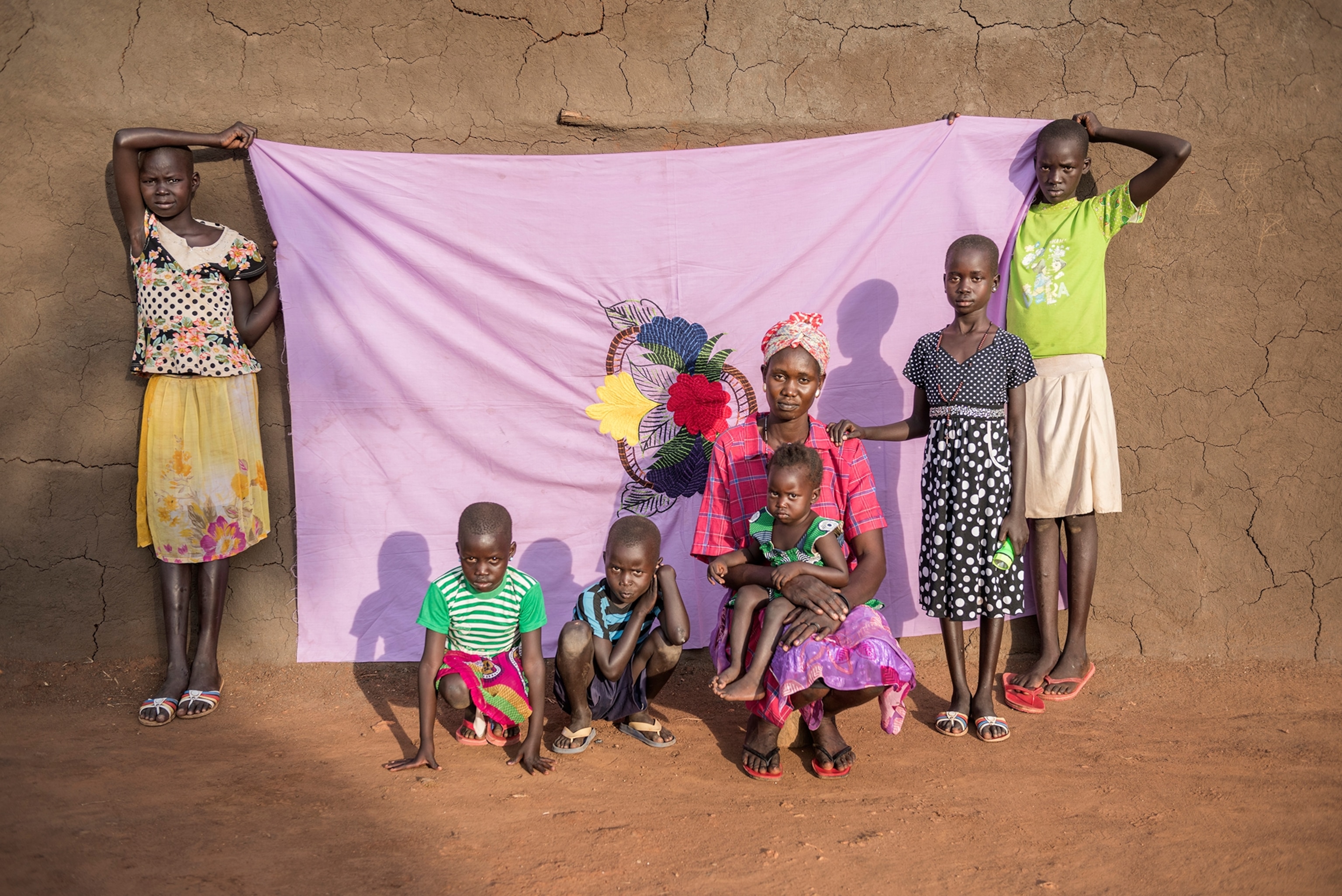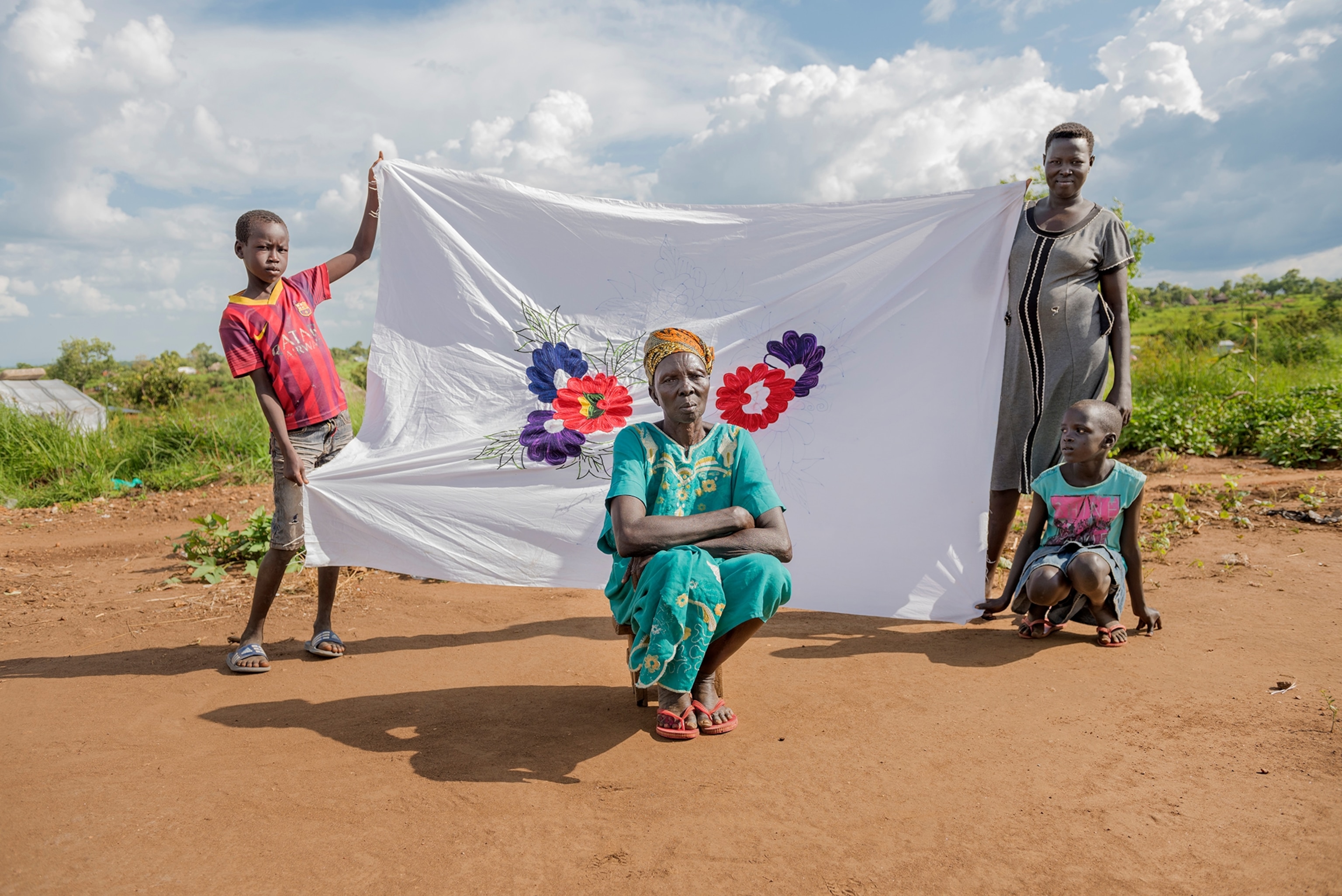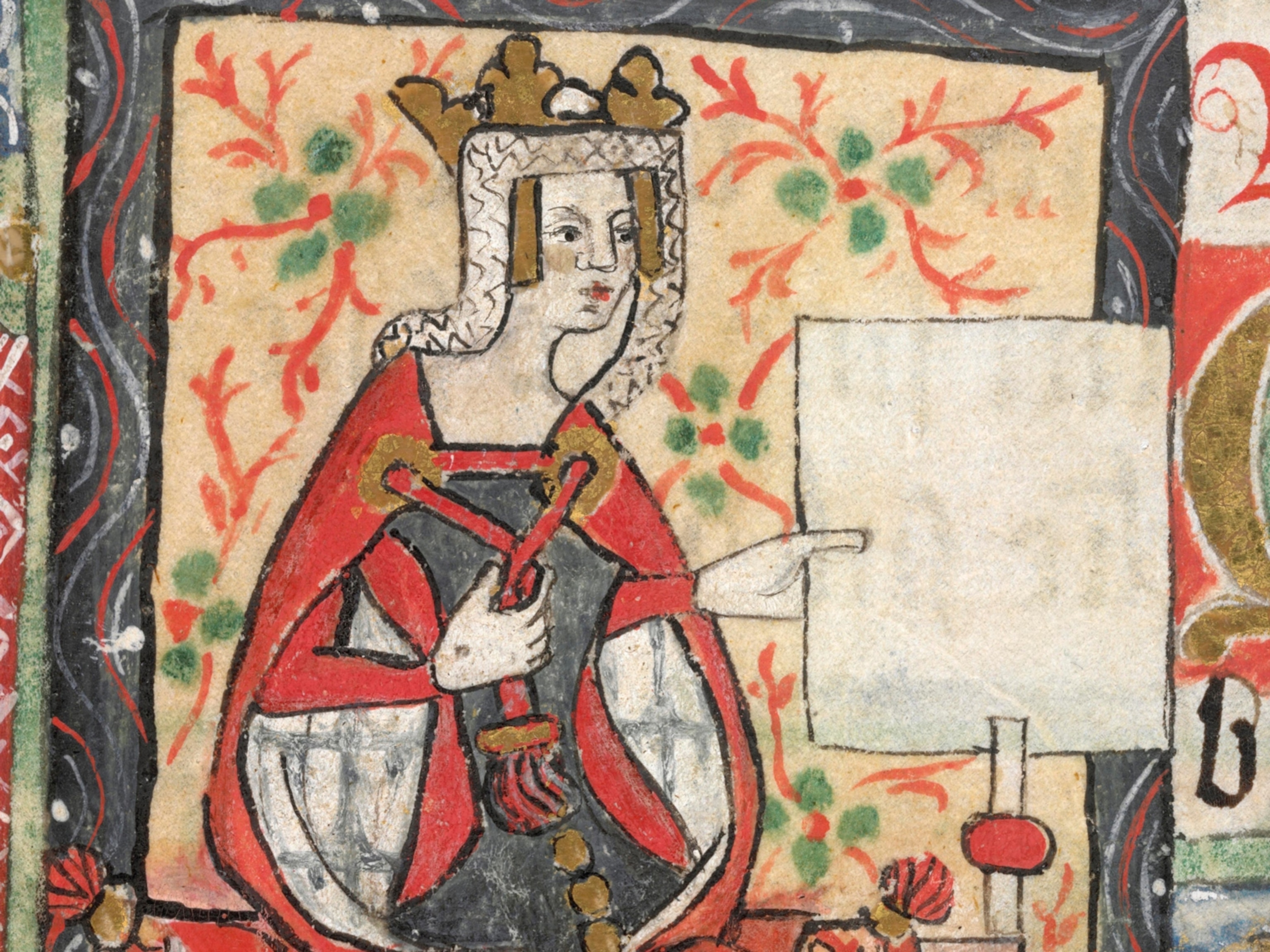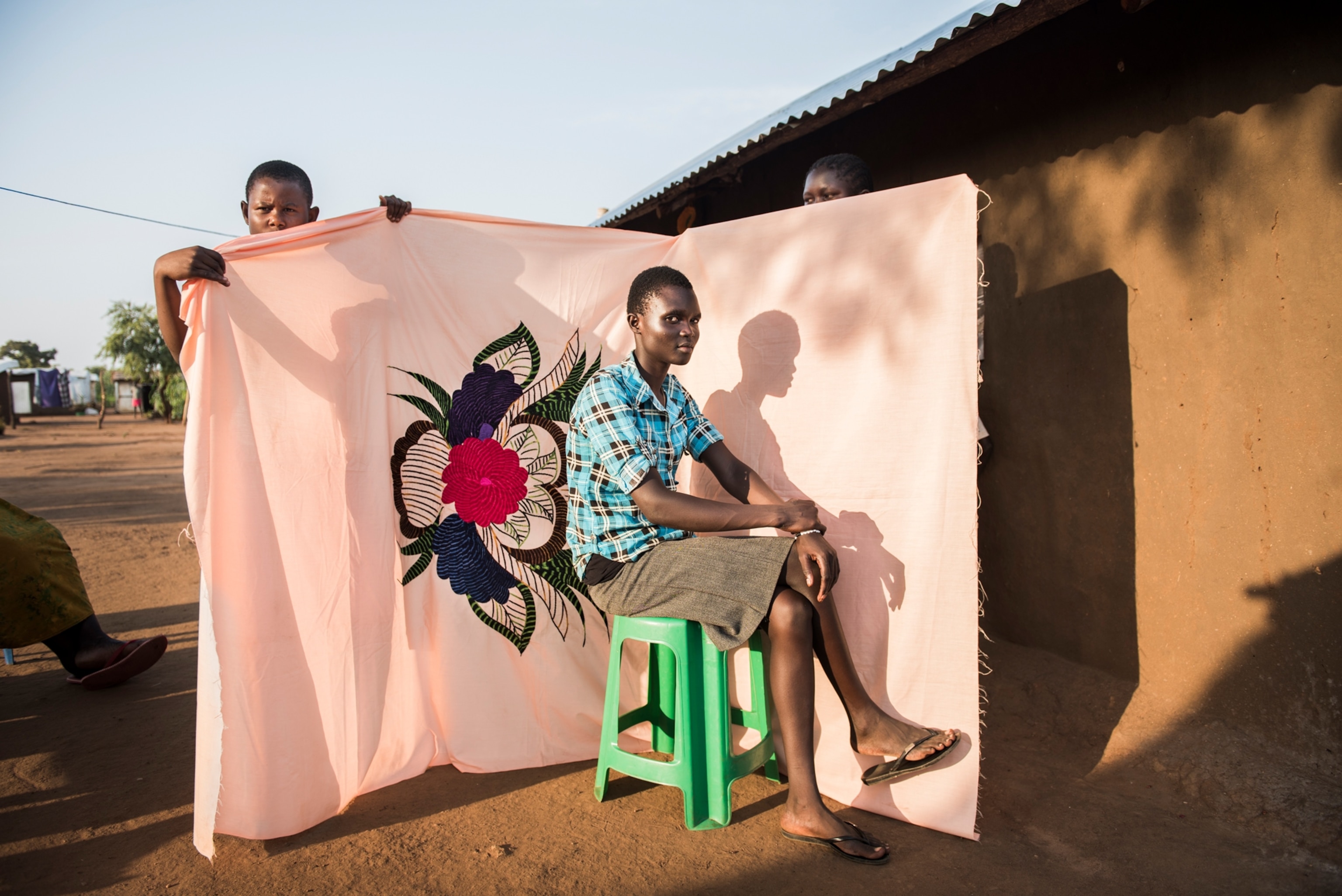
On her first day in the sprawling South Sudanese settlement of Bidibidi in Uganda, home to almost 300,000 refugees, Swedish-German photographer Nora Lorek approached a woman and asked what she’d brought from home. “Nothing,” she replied, “except for some clothes wrapped in my bedsheet.” Lorek scribbled, “bedsheet???” in her notebook.
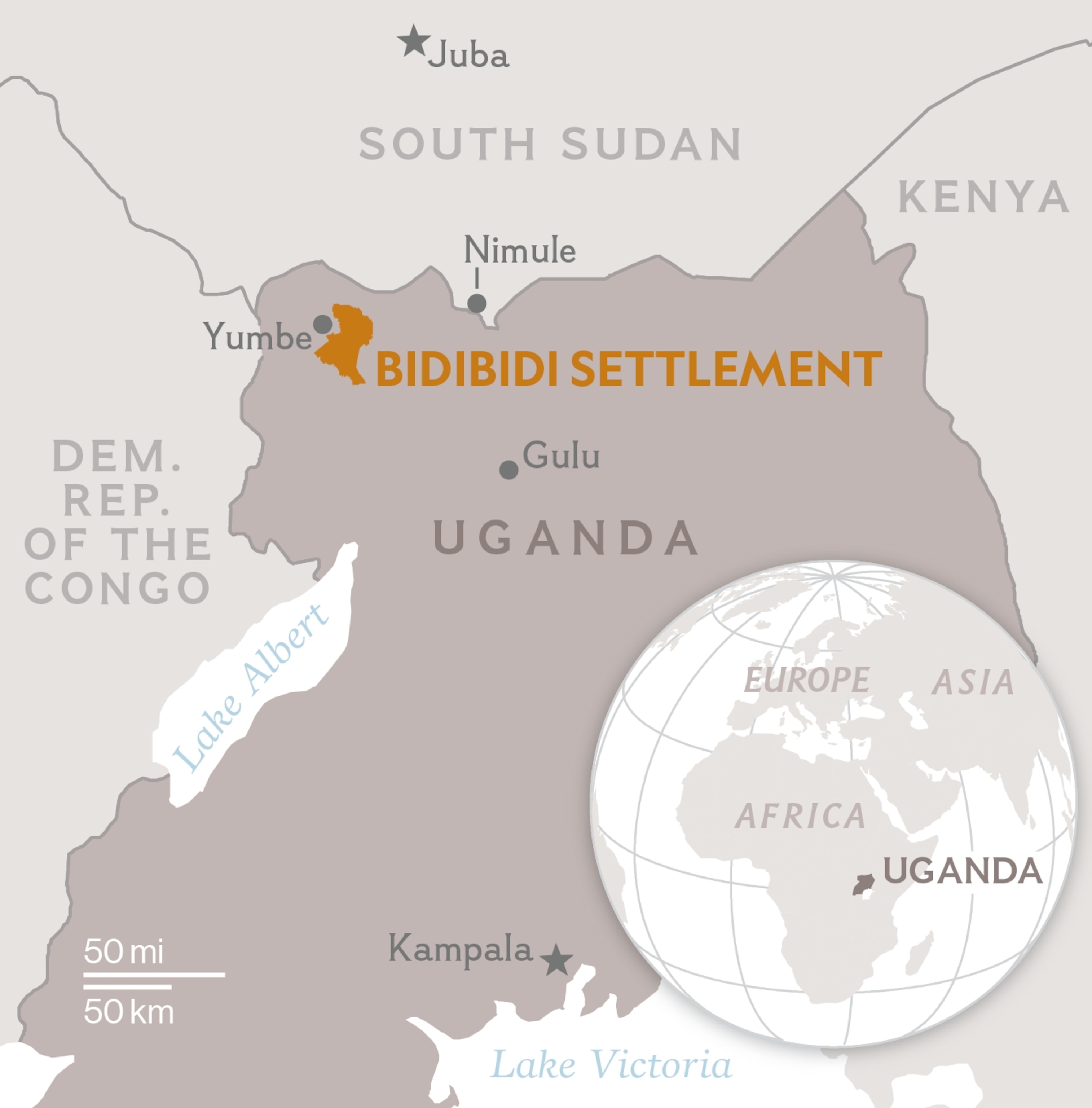
Civil war between the north and south has plagued Sudan on and off since the 1950s. In 2011, South Sudan separated from Sudan and became the world’s newest country. Soon after, in 2013, a power struggle erupted between leaders, and the country plunged into civil war. There were periods of quiet, but in 2016, on the eve of the fifth anniversary of independence, a peace deal fell apart and war resumed.
Every day thousands of refugees streamed across the border into Uganda, where they’re allowed to work, farm, and go to school. For some it was their second, third, or fourth time fleeing home. Bidibidi soon became one of the world’s largest refugee settlements. In August 2017 the millionth refugee arrived since fighting started in 2013. Uganda has one of the world’s more progressive refugee policies, but the number of new arrivals threatened to strain its hospitality.
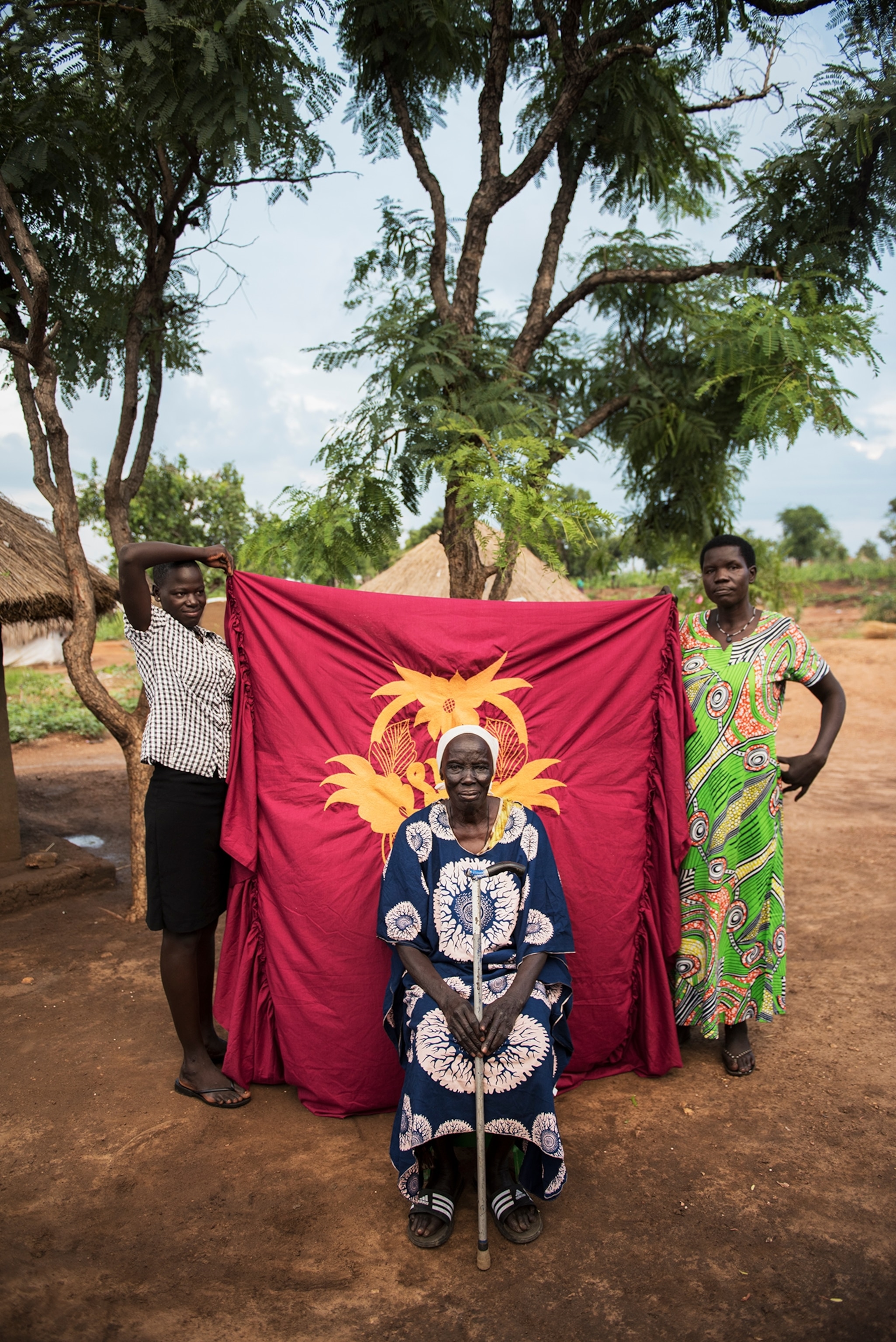
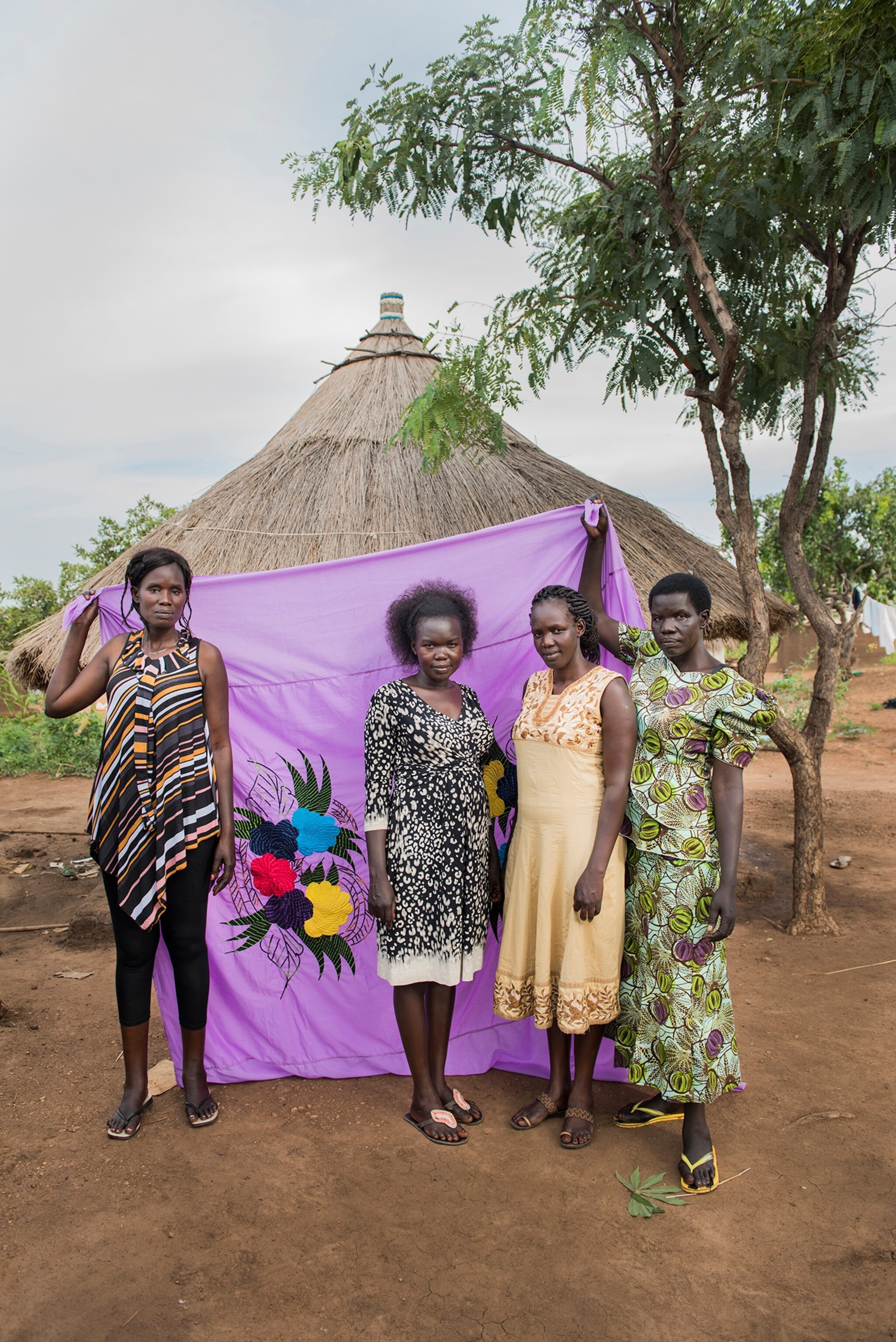
When Lorek asked around about the sheets, Bidibidi’s residents pulled out their milayas: cloths covered in ornately sewn birds, flowers, and designs. The women had learned to make them from their mothers and grandmothers. The sheets covered beds, hung on walls, and were often included in dowries.
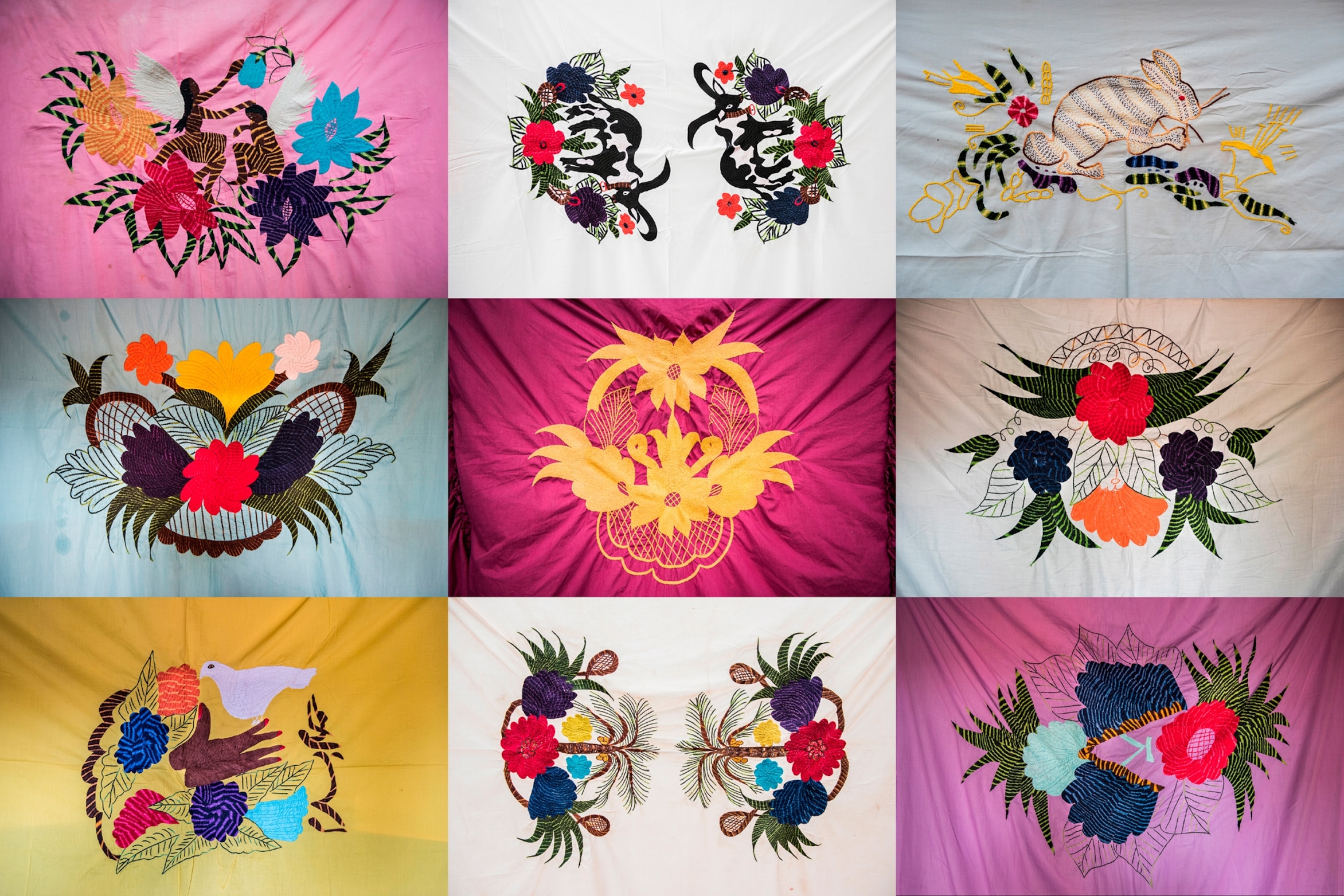
Lorek asked the women to pose in front of their sheets. “Building up these studios in their temporary homes gave me the opportunity to see more of their real home—South Sudan—even though they had to leave so much behind,” she says.
For many refugees, the milayas are the only thing left from home—and a means to make a meager living. Rose Jaun, 38, arrived from South Sudan with six children and two bedsheets. Her mother taught her how to make them, and in turn she taught her daughters. In Bidibidi she started a collective for women to sew and sell milayas.
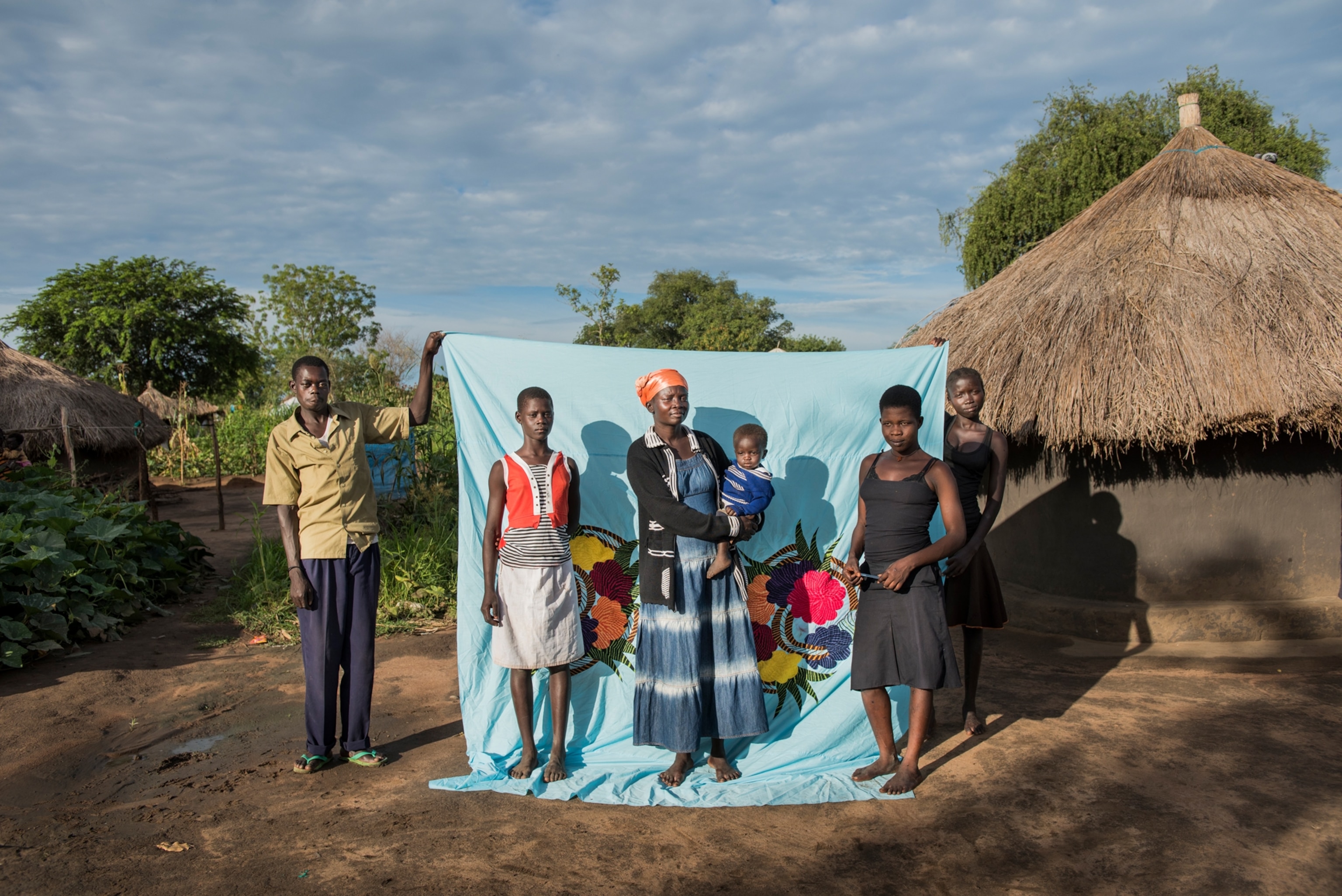
“When you’re getting married and your husband is coming to your home, you have to put the milaya high up on the house so everybody can see it,” Jaun told Lorek. “Here the making of bedsheets is only for us. It gives us time to talk and share thoughts, and an income.” Sixty women produced two a week until a fabric shortage slowed them down. Many of them also work as bricklayers to get by.

Women in the settlement told Lorek of men shot and children lost as they tried to escape. In many cases, their husbands were killed or stayed behind to fight or protect their land in South Sudan. Now the women take care of their own children and foster others by themselves.
After multiple failed attempts by both sides to maintain peace, returning home feels like a distant hope for refugees. One mother told Lorek, “We’re staying here on our own because there’s no way of going back without peace.”
